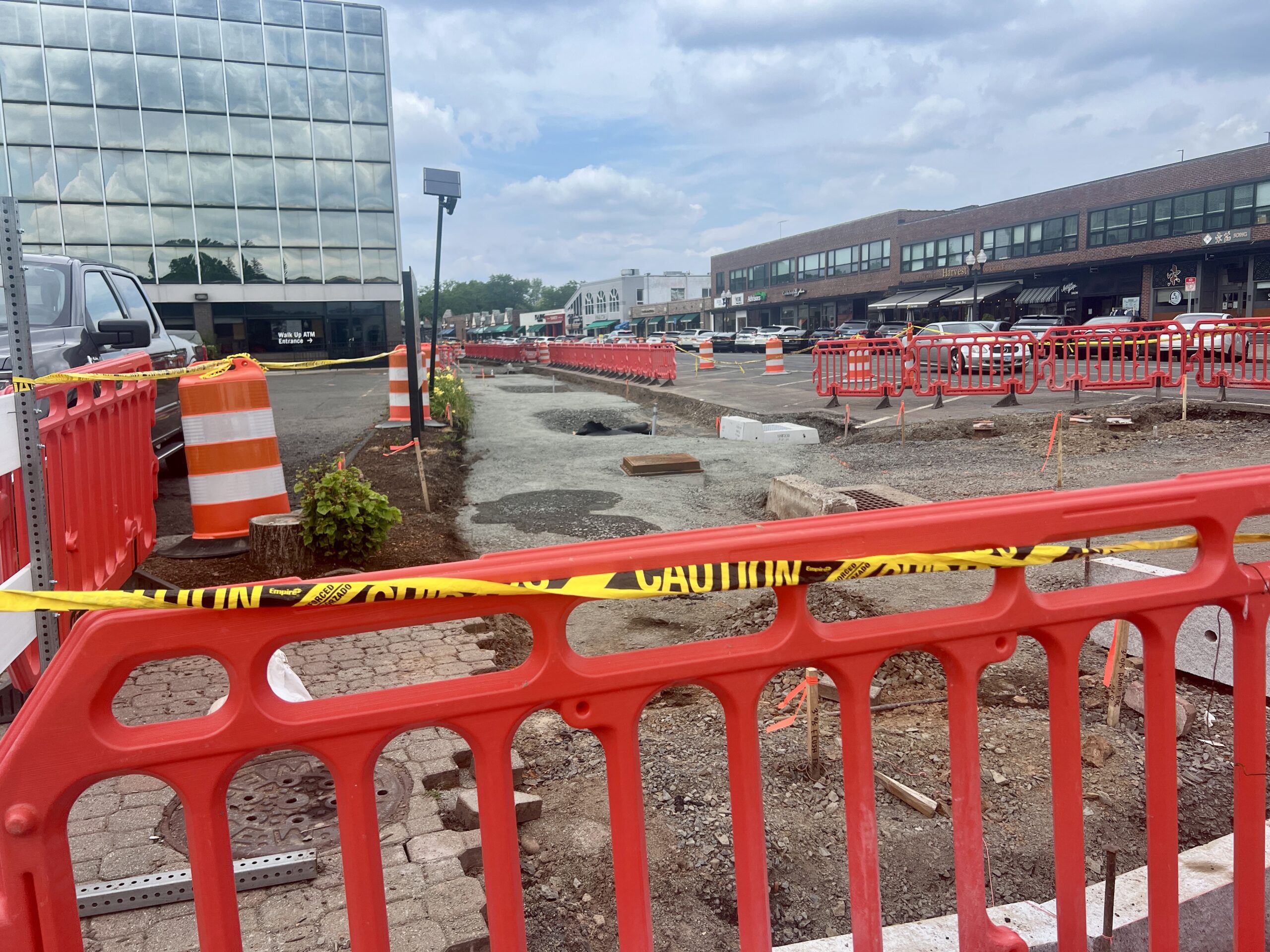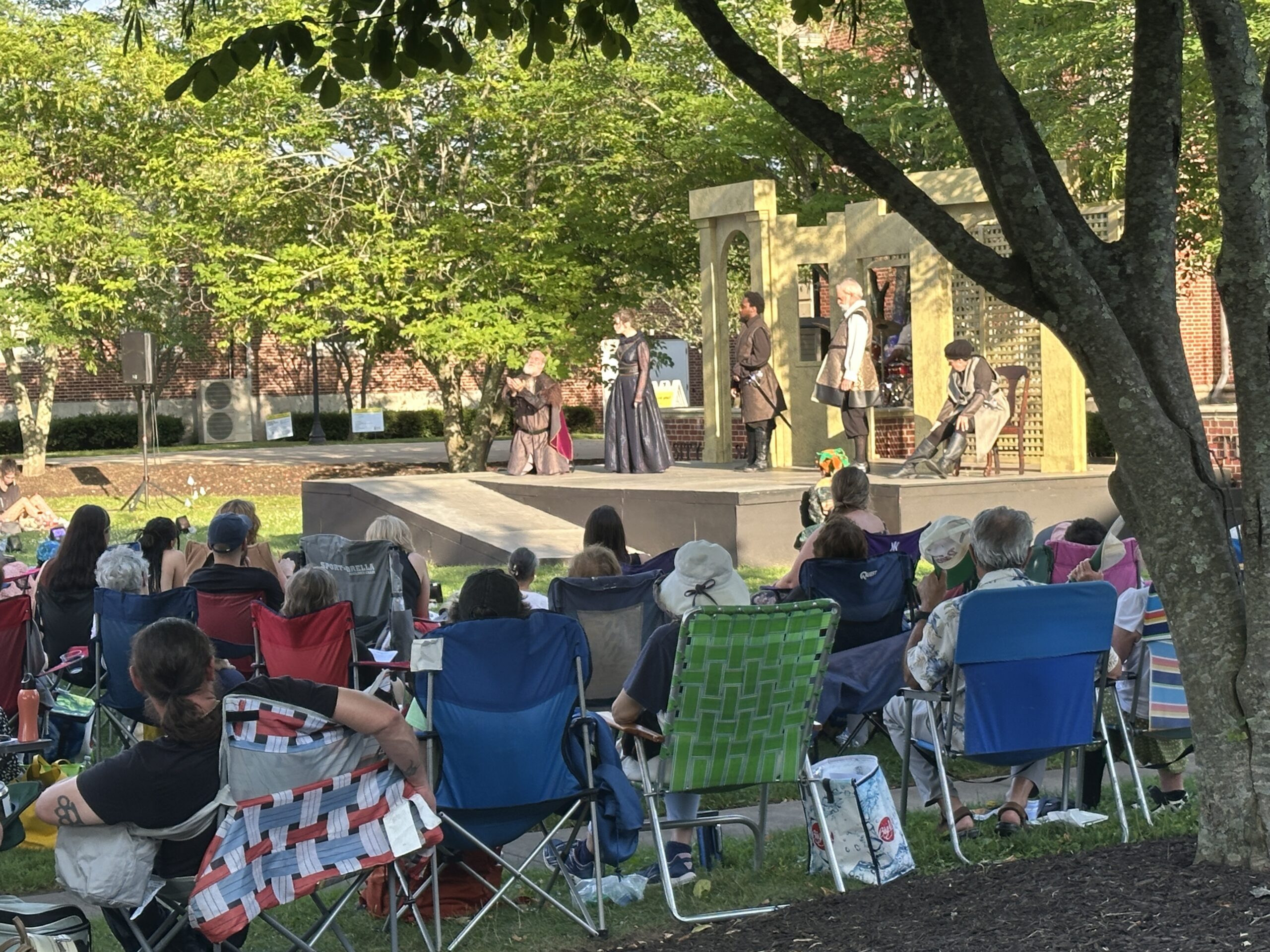From the West Hartford Archives: Rear View of the American School for the Deaf

Audio By Carbonatix
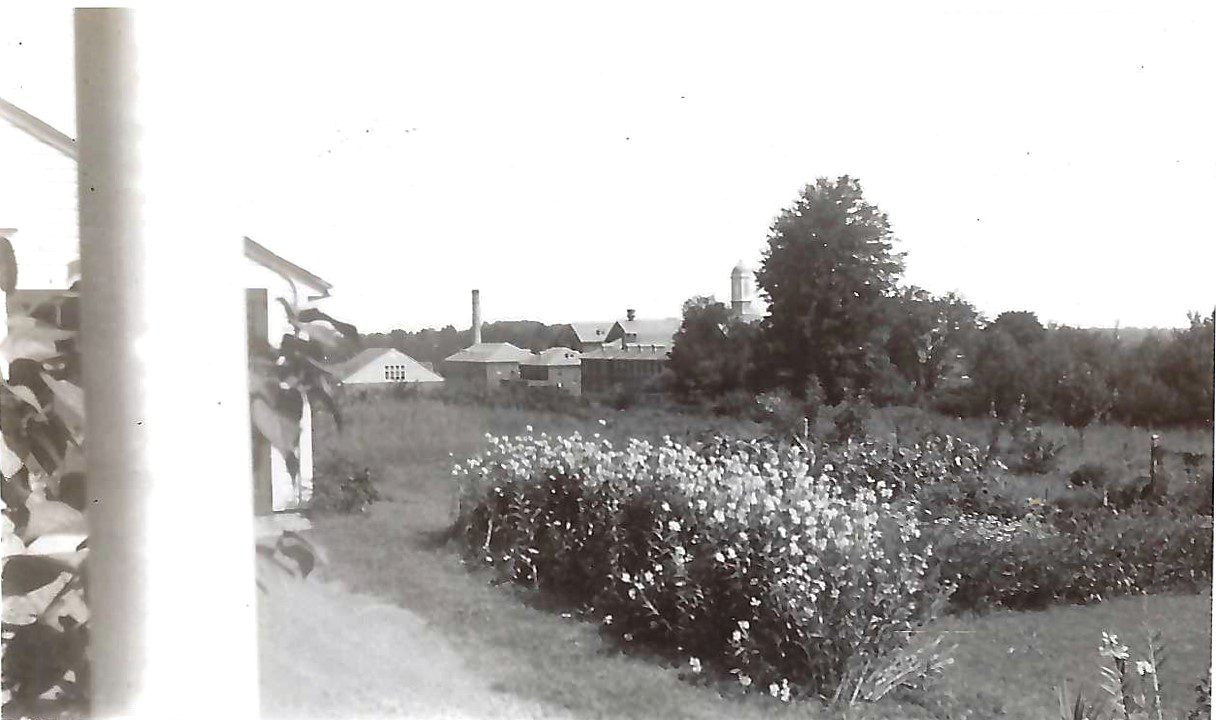
Rear view of the American School for the Deaf from Fern Street. Photo credit: Barbara Goodwin
Historian Jeff Murray takes a look into West Hartford’s past to uncover some surprising information, stir up some memories, or reflect on how much life has changed – or hasn’t changed at all. Enjoy this week’s ‘From West Hartford’s Archives’ …
By Jeff Murray
This week’s photo was contributed by Barbara Goodwin, who reached out to me this past October in regards to a previous article I had written on the Cascio Nursery on Albany Avenue. It is an interesting view of the rear of the American School for the Deaf, taken circa 1938 from 518 Fern Street.
I had mentioned that Peter Cascio, who conducted the nursery on Albany Avenue, had run a business called Fernhill Nursery across from Fern Park in the 1930s before the move to the north end of town. This business was located at 520 Fern Street, a parcel of land on the north side extending to the ASD, which the Cascios purchased in 1927. What is notably missing, of course, is Hilltop Drive, which would later be developed parallel to Fern Street in between the two properties.
In February 1937, the Cascios planned to open a street north from Fern Street called Fernhill Lane while a real estate company, the Argus Company, planned to open a street west from North Main Street to connect with Fernhill Lane. However, that fall, property owners in the vicinity objected to the layout and the town put it on hold.
It did not gain traction until May 1940 when the Cascios sold the land on Fern Street to Adolph Bahler, Jr., a builder who went ahead with essentially the same plan. This time, it was considered acceptable and the development surged forward. Bahler changed the name of the proposed street from Fernhill Lane to Hilltop Drive with four houses immediately under construction. Many of the houses were built along the road through the early 1940s.
The house at 518 Fern Street, where this photo was taken, was built in 1930 for George A. and Sarah J. Latimer. George was a nephew of the town physician Ralph W. E. Alcott. Based on voter registration records, the house was occupied by L. Adelaide Porter, a teacher at the American School for the Deaf, just a month before it was bought in 1937 by Allen B. and Emma Cook, the grandparents of the contributor.
This photo looking north was taken by them soon after it was bought and is a unique perspective of this side of town. According to Barbara, the Cooks bought a narrow strip of land from Cascio to make their side yard wider. She was told that the Cascios planted many of the large shrubs and trees that the Cooks added to the landscape in those early years. Allen worked occasionally for the nursery in the 1940s, possibly during World War II when Peter Cascio served.
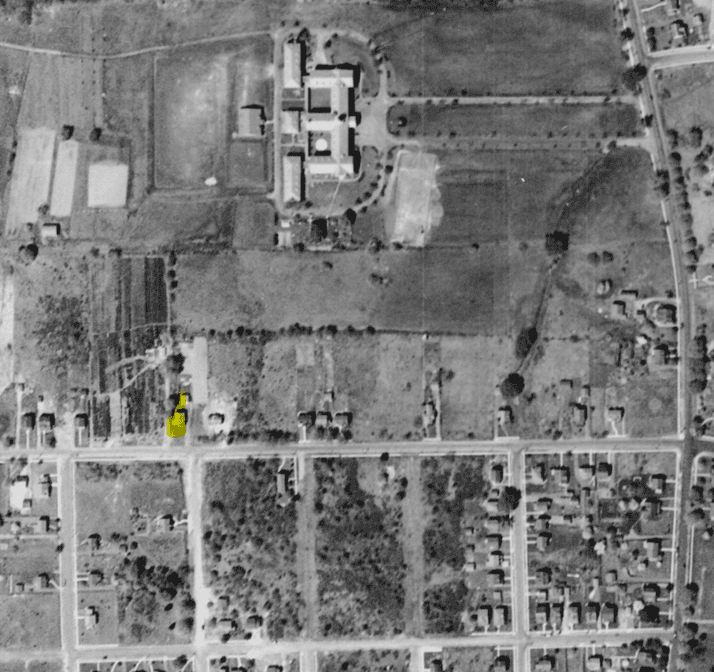
Aerial photo of the Fern Street area in 1934 – the house at 518 Fern Street is highlighted. The old Cascio nursery can be seen to the west of the house, as well as the American School for the Deaf.
Outside of the surrounding landscape of this photo though is the most important feature – the American School for the Deaf. The oldest permanent school for the deaf and hard of hearing in the U.S., it was founded on Asylum Avenue in Hartford in 1817. Originally called the American Asylum for the Deaf and Dumb, the avenue is named after the institution that stood there. It also led to the name of the area of Asylum Hill, originally called Lord’s Hill. The idea for the school came from Thomas Hopkins Gallaudet, a Yale graduate and clergyman, who had returned from a trip to a school for the deaf in Paris and who had been inspired to make that voyage by Alice Cogswell, who became deaf at the age of two from cerebral-spinal meningitis. Pushed by Cogswell’s father, Dr. Mason Fitch Cogswell, and other Hartford residents, Gallaudet founded the school, providing a base for both students and educated teachers alike. The development of American Sign Language was heavily influenced by the sign language in Paris that Gallaudet had encountered.
The foundation of the ASD has many connections to the state of America in the early 1800s. Only a generation after the U.S. won its independence from Great Britain, there was a large movement to create a standardized and inclusive education system that was uniquely “American.” Our very own Noah Webster had published his first dictionary in 1806 after the popular Revolutionary-era “Blue-Backed Speller” in his quest to build an educational core for American nationalism. The 1810s saw a significant shift towards public education and the development of better methods for educating those with disabilities. This also came out of the Enlightenment ideals popular at the time: reason, individual rights, and logical approaches to understanding the world, which helped promote universal literacy and self-reliance.
Several West Hartford residents were involved with the school before it came to North Main Street. Instructors at the school included Mary Mansfield, whose father was a prominent farmer on Albany Avenue, and Helen Flagg of Flagg Road, who went on to teach deaf students across the U.S. Walter Kilpatrick, another teacher at the school, was one of the first to build on North Quaker Lane in 1913, moving to the suburbs while still remaining close to the city.
More than 100 years after its establishment, the American School for the Deaf was looking for larger headquarters. Deaf education had flourished with deaf teachers and principals, the creation of Gallaudet University in Washington, D.C. in 1864, and a distinct deaf culture that helped spread educational methods across the United States. In 1917, the school bought 100 acres on the west side of North Main Street from William Ward, a New York man whose farm had been run by Italian immigrants for years. The school committed to moving to this site after World War I ended. Therefore, by fall 1919, work began on the new institution.
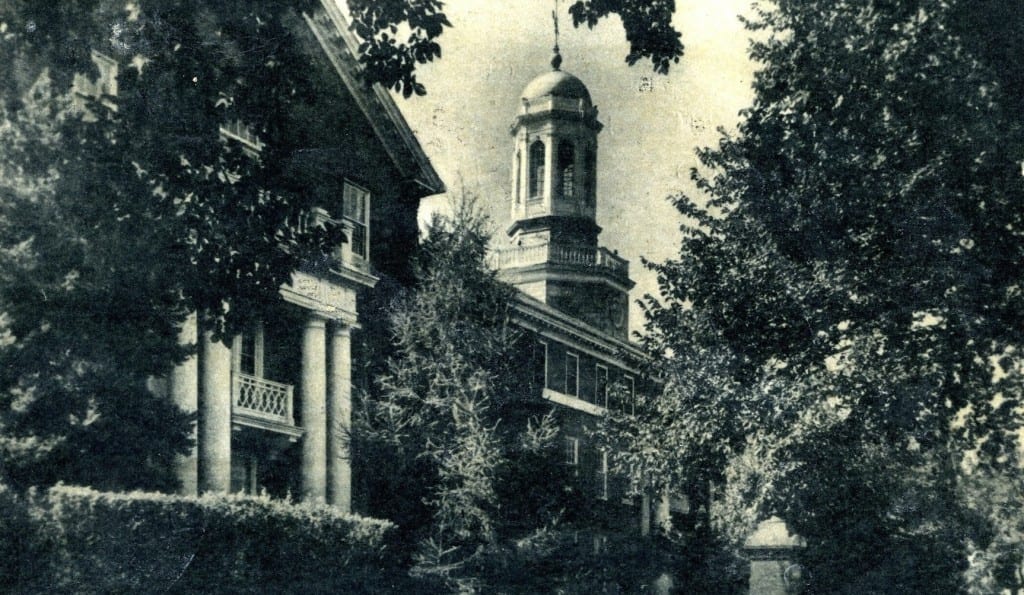
Gallaudet Building on the original ASD campus in West Hartford. Photo courtesy of Noah Webster House & West Hartford Historical Society
Construction had to happen fast during the winter. By the spring, the land would become marshy and difficult to manage. Unfortunately, things did not go as smoothly as expected. In January 1920, excavation killed a teamster, Fred Garrette, who was struck on the head by a piece of frozen dirt during blasting. By 1921, only half of it had been built, the fund of nearly $500,000 depleted entirely, mostly by inflation – building material and labor costs had skyrocketed.
After borrowing more money and reducing the capacity of the dorms that were originally planned, the school was completed at the beginning of 1922. The campus was known for its long driveway back from North Main Street leading to Gallaudet Hall and accommodated 500 students at its peak. Several generations of deaf and hard of hearing students passed through this campus before the old building became too expensive and run down to preserve. It was demolished in 2015 to make way for the current school building.
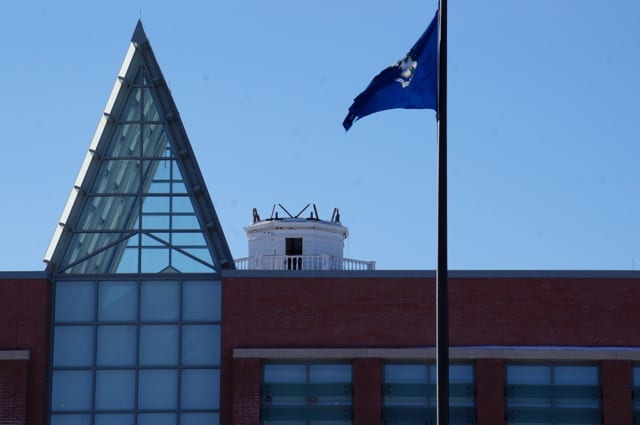
The cupola was been removed from the top of Gallaudet Hall on the ASD campus in West Hartford in 2015, before the structure was demolished. Photo credit: Ronni Newton (we-ha.com file photo)
Thanks to Barbara Goodwin, we have an interesting look at the serene landscape that once surrounded the American School for the Deaf just 15 years after it was built and only a few years before Hilltop Drive was laid out.
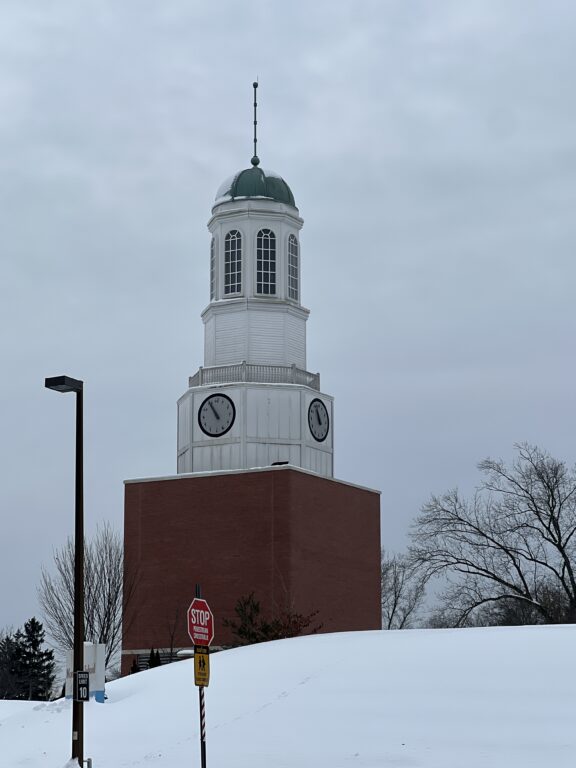
The cupola from the old Gallaudet building was removed, but remains on the ASD campus. Photo credit: Ronni Newton
Jeff Murray was born and raised in West Hartford and has been involved with the Noah Webster House & West Hartford Historical Society since 2011 when he was a high school student and won the Meyer Prize for his essay on local history. Jeff routinely volunteers as local history researcher uncovering information for numerous museum programs such as the West Hartford House Tour and West Hartford Hauntings. Jeff works as a data analyst at Pratt & Whitney.
Like what you see here? Click here to subscribe to We-Ha’s newsletter so you’ll always be in the know about what’s happening in West Hartford! Click the blue button below to become a supporter of We-Ha.com and our efforts to continue producing quality journalism.


